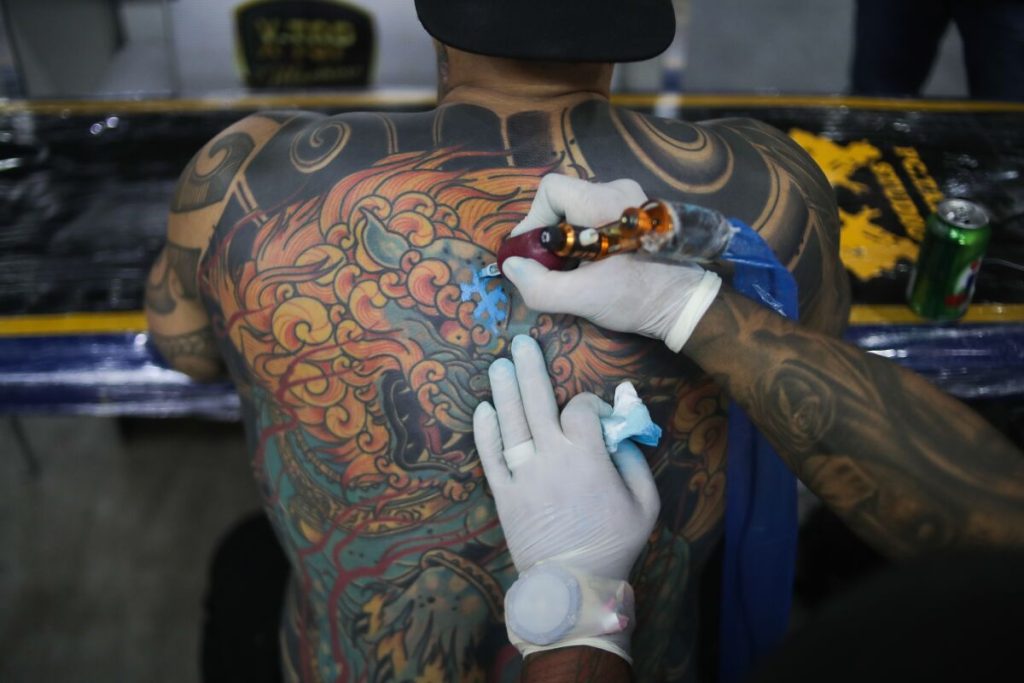Tattoos have been around for a long time in human history, since the Neolithic Age. They have appeared in cultures all over the world. And they have served a multitude of purposes. They have traditionally been used as status symbols, for healing purposes, to brand slaves, to brand criminals, to indicate passage from one age grade to another, as decoration, and for religious purposes such as amulets among other uses. But the one thing that can be said is that, in traditional natural societies, all the uses had a social purpose. Even something as personal as decoration adhered to conventional patterns of decoration that would be socially acceptable and socially pleasing.
However, I would submit that all tattoos in traditional natural societies had a deeper purpose in common. Living in a physical environment that was full of flowing blendable continual organic stimuli that created blurry perceptions and that led to ambiguous interpretations of events, tattoos on one’s skin served as defined discrete focal points, defined discrete figures that helped to hold a person together experientially and pushed away the undifferentiating tendencies that came from living so close to nature. Every time a person felt like his consciousness was going to melt down, he could focus on his tattoos as something that was concrete and that had precise outlines and that could act as an externalization of his defined, discrete sense of self.
In modern technological society, where the influence of traditional cultural groups has diminished significantly, tattoos have become a vehicle for self-expression. People frequently create their own designs. At the same time, just like with tattoos in traditional natural society, there is a deeper purpose for tattoos in modern technological society. Today, people live in a physical environment full of the defined discrete stimuli of machines and devices with sharp clean lines and of information in the form of defined discrete data generated within computers. This is not the kind of stimuli for which humans were built. On the one hand, some of it is experienced as abrasive overstimulation in the form of noise pollution from loud machines and from vibrating electrical musical instruments, visual and noise pollution from speeding cars, buses, trucks and motorcycles, air pollution from waste products, smell pollution from modern chemicals, and crowd pollution from the crowding together of people in tight urban spaces. And, on the other hand, some of it is experienced as numbing understimulation: the vertiginous numbing that comes from spending time in a high-rise office or dwelling, frequently surrounded by the experiential vacuum of empty space and always high above the organic grounding of the earth, as well as the stimuli that emanate from the screen reality created by modern consumer technology. These stimuli are mediated behind the screens of modern consumer machines. They just simply do not have the intensity of stimuli coming from primary experience in the external world.
At any rate, different aspects of tattoos are emphasized in modern technological society from those that are emphasized in traditional natural society. Whereas, in traditional natural society, the emphasis is on the focused definition that tattoos provide against the dangers of undifferentiation or melting into an environment packed with organic stimuli, in modern technological society, the emphasis is on the tattoo being itself a source of aesthetically pleasing organic stimulation and even organic grounding, in a living environment that is basically an experiential vacuum filled with a lot of free-floating figures and complexes of figures. In today’s world, a tattoo serves to help a person focus on his mammalian body. It becomes a source of grounding that prevents him from floating off in the experiential vacuum with a lot of other lifeless figures. Whereas, in a traditional natural living environment, the tattoo helps to keep a person defined, in a modern technological living environment, a tattoo helps to keep a person coherent. Whereas, in a traditional natural living environment, a tattoo helps to protect a person against undifferentiating or melting into his living environment, in a modern technological living environment, a tattoo helps to protect a person against entropic disintegration, the random movement of pieces of his sense of self throughout the experiential vacuum in which he dwells, and the resulting crumbling of his sense of self.
In each of these two kinds of external world living environments, the tattoo is used to create a personal living environment to compensate for the deficiencies that are found in the external world living environment to which it is attached. To that extent, in its own way, a tattoo becomes like a mini-world unto itself.
© 2023


Artículos Relacionados: